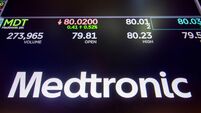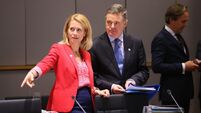Food prices behind China’s inflation spike
China’s inflation rate was a talking point yesterday as it hit its highest level in more than 11 years in January.
Part of the recurring food inflation theme has been the weather.
The snow storms that caused havoc in the run up to the Chinese New Year tell their own story and were part of the worst winter weather in decades.
The bad weather played havoc with food prices and supply lines and as a result the inflation rate hit 7.1% last month.
However, the main driver of the inflation spike was the huge 18.2% rise in food prices, with the cost of pork up by 58.8% compared with a year ago.
Drought in Australia for the past few years has played havoc with the wheat crop and last year the cost of pig feed on this side of the world rising by an much as 70%.
If Australia suffers another dry summer the cost of grain will be seriously impacted once again.
Despite the fall from grace of the US economy and the impending global economic slow down, the cost of oil shows no sign of easing back from its near-record highs and is currently trading at about $95.
Oil is more central to the food inflation story than is generally appreciated.
Its growing scarcity has driven the search for alternative fuels. Many farmers have diverted their energies to growing crops for the biofuel sector meaning less grain for food and animal feed stock resulting in huge price hikes.
From a food price perspective, we seem to have entered a period where the search for alternative fuels, climate change, global unrest, bad winters, and flooding is resulting in dearer food.
This inflation issue is not going away. It has prevented the ECB from cutting rates to help boost economic growth in the wake of the US downturn that ishaving a knock on effect in Europe.
Eurozone growth is set to slow sharply this year tobetween 1.6% and 1.8%. This would mark a sharp slowdown from 2007, when the eurozone economy grew by 2.7%.
That’s a full 1% drop in growth that might be avoided to some extent if the ECB had moved earlier to cut interest rates.
But the central bank, has refused to budge despite the action taken by the US where rates have been cut by 2.25% since September.
In January, eurozone inflation hit a record 3.2% — less than half the rate faced by China’s burgeoning consumer class. From an EU perspective, that figure represents the highest rate since the single currency was introduced and well above the ECB’s target level of less than 2%.
The ECB has kept interest rates unchanged at 4% since the credit crunch hit last August despite the fact that the bank’s president, Jean-Claude Trichet, referred to the “unusually high” uncertainty about eurozone growth prospects after the bank’s last monthly meeting in Frankfurt.
His reference was a signal the ECB will cut rates this year. But it will not move until the inflation issue starts to ease back.
The bad news is that, while the ECB expects inflation to slow in the months ahead, the outlook for food costs pretty grim.
As the price of oil stays high, the cost of food is starting to move up reversing a long established trend of falling real food prices.
The cost of food rose 7% in the past 12 months, due to the impact of the global surge in commodity prices, including wheat and other grains.
High oil prices have forced up home heating oil costs by 32%. As oil prices rose over the past 12 months, so did the cost of food.
That trend looks set to continue even if inflation is starting to ease back.














